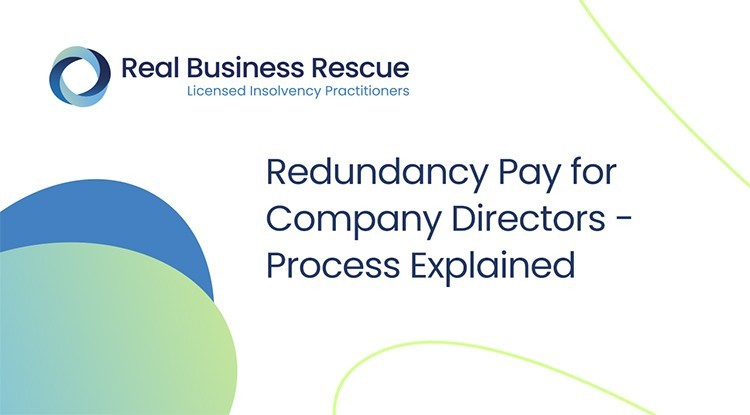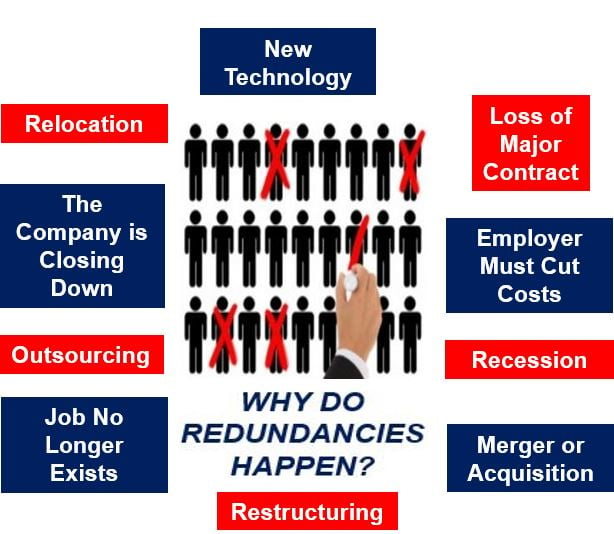Who Pays Redundancy Money? An In-depth Guide for Companies and Employees
Who Pays Redundancy Money? An In-depth Guide for Companies and Employees
Blog Article
Checking Out the Interplay In Between Business Redundancy and Business Versatility for Future Growth
In the dynamic landscape of today's company globe, the detailed partnership in between business redundancy and business flexibility arises as an essential element for continual growth and success. Business often encounter the difficulty of striking a delicate equilibrium in between maintaining a level of redundancy to alleviate risks and fostering adaptability to respond swiftly to the ever-evolving market needs.
Importance of Firm Redundancy
Company redundancy is an essential element that improves organizational strength and alleviates functional dangers. By incorporating redundancy measures within the organizational structure, business can better endure unforeseen interruptions and changes in the business environment. Redundancy offers as a strategic barrier, enabling companies to adjust and react efficiently to unanticipated difficulties without jeopardizing crucial operations.
One trick aspect of the relevance of business redundancy is its duty in ensuring connection throughout times of crisis. When confronted with unexpected modifications or emergencies, redundant systems, resources, or workers can action in to preserve essential functions and protect against extensive disruptions. This continuity not only safeguards the business's track record and consumer trust however also minimizes monetary losses and functional downtime.

Methods for Organizational Flexibility

Producing versatile organizational structures that enable for quick adjustments to market dynamics and customer needs is essential for remaining competitive in a swiftly developing environment. By proactively determining prospective interruptions and possibilities, organizations can proactively adjust and flourish in an ever-changing business landscape.
Harmonizing Redundancy and Flexibility
Achieving a harmonious equilibrium between operational redundancy and business flexibility is extremely important in browsing the intricacies of a vibrant service setting. Redundancy within a business gives a security web, guaranteeing connection and stability in operations. Nonetheless, an unwanted of redundancy can bring about ineffectiveness and prevent flexibility to transforming market problems. On the various other hand, organizational versatility allows firms to respond promptly to outside disruptions and confiscate brand-new opportunities. Striking the best balance between redundancy and versatility is a fragile process that requires a deep understanding of the company's goals, sector characteristics, and threat tolerance.
To attain this balance, firms need to perform routine evaluations of their procedures to determine areas where redundancy is necessary for danger reduction and where versatility can drive development and growth. Carrying out versatile frameworks, cultivating a culture of constant discovering and improvement, and encouraging open interaction across all levels of the organization are vital strategies to harmonize redundancy and flexibility successfully. By lining up these 2 essential elements, companies can position themselves for sustainable development and success in an ever-changing service landscape.
Instance Research Studies on Adjustment Success
In examining circumstances of successful organizational adaptation, it becomes apparent that the interplay between functional redundancy and flexibility is a defining consider forming resistant services. One compelling study is that of Netflix. At first a DVD rental service, Netflix demonstrated remarkable flexibility by transitioning right into a streaming click here for info platform when digitalization interrupted the industry. By tactically purchasing modern technology and web content production, Netflix not only prospered however survived in a swiftly evolving market. Another standout instance is Amazon. Beginning as an on the internet book shop, Amazon continually adapted its service model, broadening right into varied sectors such as cloud computing and fabricated intelligence. This adaptability enabled Amazon to remain in advance of competitors and fulfill transforming consumer needs. Lastly, Adobe supplies a notable picture of successful adjustment. The business changed from offering software licenses to a subscription-based version, making certain persisting earnings streams and enhanced client interaction. These case researches emphasize the relevance of functional redundancy paired with organizational flexibility in cultivating long-term growth and competition.
Structure Durability for Future Development
Building resilience for future growth calls for a strategic placement of functional processes with market characteristics and arising trends. Companies have to adjust to transforming atmospheres by cultivating a culture of flexibility, development, and constant enhancement.
Additionally, promoting strong partnerships with stakeholders, such as customers, employees, providers, and the community, is essential for weathering unpredictabilities and maintaining trust and support throughout rough times. Reliable communication and openness play a vital role in building resilience, as they assist help with and line up assumptions cooperation in navigating unpredictabilities.
Moreover, organizations require to prioritize discovering and growth initiatives to upskill staff members and outfit them with the required tools to adapt to changing conditions. By purchasing their workforce, companies can enhance their versatility and dexterity, eventually reinforcing their resilience for sustainable future development.
Final Thought

In the vibrant landscape of today's organization globe, the intricate relationship between firm redundancy and business flexibility emerges as a critical element for sustained development and success. Companies usually deal with the difficulty of striking a delicate balance between maintaining a level of redundancy to minimize risks and fostering adaptability to respond swiftly to the ever-evolving market demands.To attain this balance, firms need to conduct routine analyses of their operations to determine locations where redundancy is top article essential for threat mitigation and where versatility can drive innovation and growth.In conclusion, the interaction in between firm redundancy and business adaptability is important for future growth. Building durability via a mix of redundancy and adaptability will make certain that companies are prepared for the difficulties of the future.
Report this page